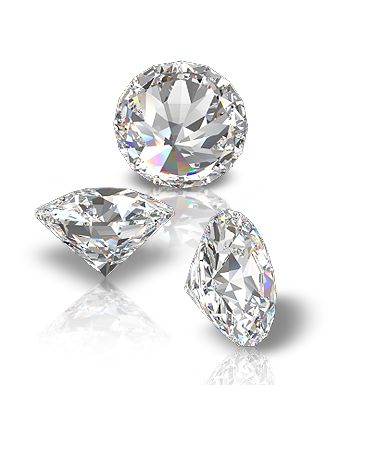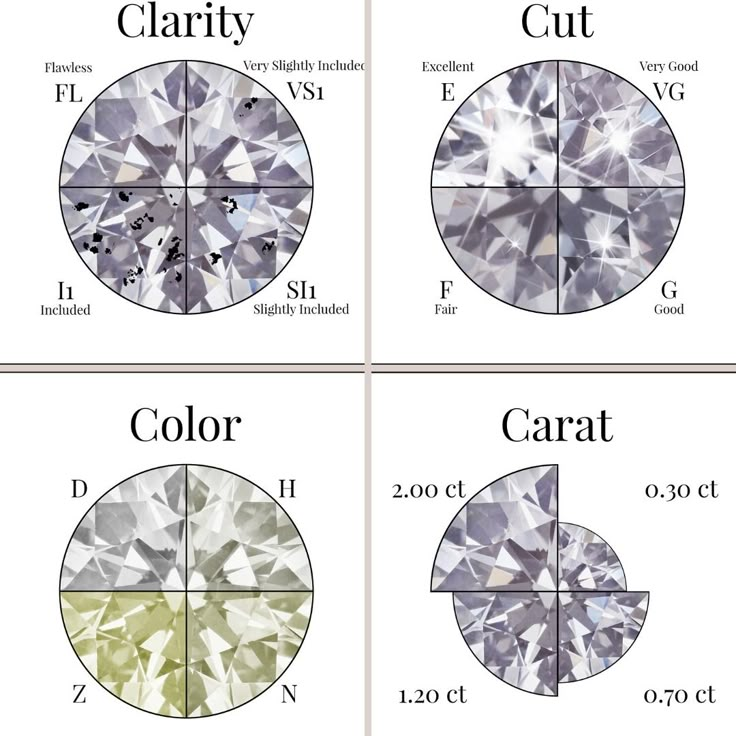NOOPSTAR DIAMONDS
Diamonds: Nature’s Sparkling Masterpiece

Humans have been captivated by diamonds for generations. These stunning stones represent love, strength, and eternity in everything from engagement rings to royal crowns. However, what precisely is so unique about a diamond? Let’s explore the fascinating realm of diamonds.
What Are Diamonds?
An all-carbon crystal with a robust, three-dimensional structure is called a diamond. It develops over millions, sometimes billions, of years under intense heat and pressure deep inside the Earth. Diamonds are the hardest natural material on Earth because of their special structure.
The 4 Cs OF DIAMONDS
1 . CUT
A diamond’s ability to reflect light is influenced by its cut. Even if a diamond has many excellent attributes, a poorly cut diamond may appear dull, whereas a well-cut diamond will sparkle brilliantly.
2 . COLOR
Although diamonds can have many different colors, the most precious ones are usually colorless. But fancy diamonds, which come in uncommon hues like pink, blue, and yellow, can cost even more.
3 . CLARITY
The number of internal or exterior defects (blemishes and inclusions) that a diamond possesses is referred to as its clarity. Greater clarity and value result from fewer defects.
CARAT
The weight of a diamond, not its size, is measured in carats. Bigger diamonds are typically rarer and more expensive.

Choosing the Right Diamond Cut: Traditional vs. Modern Styles
At Noopstar Diamond, we recognize the significance of a diamond cut selection and how it conveys a tale of creativity, accuracy, and classic beauty. We provide a carefully chosen assortment of cuts that represent tradition and cutting-edge design, taking pride in both traditional craftsmanship and contemporary technology.
We examine a few classic and contemporary cuts in this blog, emphasizing how each one represents a distinct journey.
Traditional diamond cuts for timeless elegance
Due to their broad acceptance and marketability, traditional diamond cuts have endured and continue to attract clients.
1 . Round cut
With about 75% of all diamond sales, the round cut is still the most popular diamond shape. Its 58 facets provide unmatched brilliance by maximizing light reflection.
It is perfect for conventional engagement rings, timeless collections, and people who want timeless, timeless things.
2. Oval cut
The oval cut, which is distinguished by its lengthy shape, provides a chic take on the classic round cut. Customers find it appealing because of its capacity to provide the appearance of a larger diamond. Without adding weight, it flawlessly maximizes visual impact.
3. Pear cut
The teardrop form of the pear cut blends the length of the marquise cut with the brilliance of the round cut. Customers looking for a blend of tradition and originality are drawn to its vintage appeal.
Anyone searching for multipurpose, retro-inspired jewelry must have it.
4. Emerald cut
The rectangular facets of the emerald cut give it a classy and refined appearance by emphasizing clarity over brilliance. Its stepped facets showcase the diamond’s intrinsic quality by producing a “hall of mirrors” impression.
It provides excellent clarity and is frequently utilized in luxury collections or engagement rings.
5. Marquise cut
Usually arranged in a 2:1 length-to-width ratio, it creates a striking impression unlike any other.
Originally created to mimic the Marquise de Pompadour’s grin, the marquise cut has a royal past thanks to its long shape and pointed tips. It is a striking option because of its unique shape.
6. Asscher cut
Another step-shaped diamond with an Art Deco appeal is the Asscher cut, which is square in shape and comparable to the emerald cut. It is a choice for jewelry with a vintage feel because of its large facets and deep pavilion.
It conveys confidence and sophisticated taste and is typically very uncommon. This cut is sure to turn heads and is perfect for collectors of luxury and antique jewelry as well as those who value accuracy and clarity.
Modern diamond cuts: Contemporary flair
Customers and businesses who appreciate innovation and a non-traditional appeal can find intriguing alternatives to traditional shapes in modern diamond cutting. These cuts appeal to a trend-conscious clientele and represent current tendencies.
1. Princess cut
The princess cut is characterized by its feminine appeal, sharp corners, and square shape. It rivals the round cut in terms of spectacular glitter, but it has a modern twist.
Especially for engagement rings, it offers a harmony between tradition and contemporary design. One of the best-selling diamond cutters, it gained prominence in the 1980s and 1990s.
2. Kite cut
The kite cut is a contemporary geometric shape that is distinctive because of its sharp edges. It provides a distinctive and edgy appearance that is ideal for jewelry pieces that make a statement. It has become more well-known in recent decades due to its unique design and stepped faceting. It is perfect for collections that set trends and target younger, style-conscious consumers.
3. Heart cut
A popular option in contemporary collections meant to appeal to customers seeking symbolism in their jewelry, the heart cut is passionate and daring. It is perfect for jewelry collections that have a special, romantic appeal and emotional meaning.
4. Cushion cut
The cushion cut, which has a square form with softer sides, is a contemporary interpretation of vintage diamond forms. Its pillow-like appearance radiates a delicate sheen and an old-fashioned, romantic vibe.
5. Trillion cut
This triangle cut has outstanding fire and sparkle and a very contemporary appearance. Although they are frequently used as side stones in jewelry settings, trillion-cut diamonds are increasingly being employed as the focal point of avant-garde creations.
6. Radiant cut
The emerald cut’s form and the round cut’s brilliance are combined in the radiant cut. Its facets provide a contemporary, squared-off design while maximizing light reflection.
It is perfect for modern, bespoke, or artisanal jewelry where brightness is crucial.
Conclusion
To sum up, selecting the ideal diamond cut is a skill that blends centuries of custom with the creativity of contemporary craftsmen. Laxmi Diamond’s unmatched experience of more than 50 years is what makes it unique. Whether choosing a modern design or a traditional cut, our artists’ timeless brilliance maintains its position above all trends. We continue to define accuracy, luxury, and innovation in the diamond industry by upholding our tradition of excellence and dedication to quality; each piece is crafted with craftsmanship and has enduring worth.